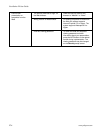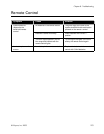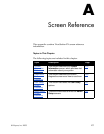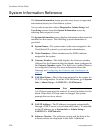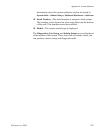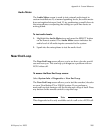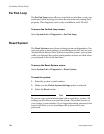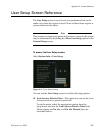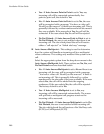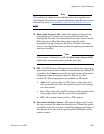ViewStation EX User Guide
282 www.polycom.com
❑ LSD Protocol and Rate—Rate allocated for the transmit and
receive LSD channels (Low Speed Data), and the protocols that
are used on the channels.The LSD data channels can support the
H.224 protocol, which is used for far-end camera control
(FECC).
❑ MLP Protocol and Rate—Rate allocated for the transmit and
receive MLP channels, and the protocols that are used on the
channels. The MLP (Multi-Layer Protocol) data channels can
support both H.224 and T.120, which is used for NetMeeting.
❑ Data Conference—The + or - sign indicates whether or not the
system is configured for data conferencing.
❑ Remote System ID—Type of unit and software version of the
far site.
About Polycom Video Error Concealment™ (PVEC)
If packet loss is indicated in the % Packet Loss field, then the Video
Protocol field displays PVEC in the Tx and/or the Rx data columns
as the active video protocol.
PVEC is a Polycom proprietary video coding algorithm based on the
H.263 video coding standard. Its purpose is to transparently remedy
video degradation caused by packet loss in an H.323 call. PVEC uses
a sophisticated video compensation algorithm to estimate the
content of lost video data and seamlessly repair the video. PVEC has
proven to be very effective at preserving video quality in the
presence of high levels of packet loss. Video quality degradation
with the PVEC feature active may indicate that your IP network is
not functioning properly.
Without PVEC, packet loss, even minimal, usually causes blurred or
frozen frame video. When the system detects packet loss, PVEC is
activated automatically. Similarly, it is automatically turned off
when packet loss becomes negligible.
This feature works in regular video calls, snapshot and 4CIF mode.
At this time, it is not operational in dual stream mode and standards
based 60 fields video.



